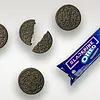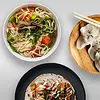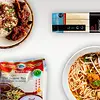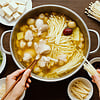Mid-Autumn Festival: traditions, mooncakes, and celebrations across Asia
What is the Mid-Autumn Festival?
The Mid-Autumn Festival, also known as the Moon Festival, is a major celebration centered around the full moon, family gatherings, and sharing food — most famously mooncakes. It falls on the 15th day of the 8th month of the lunar calendar, usually in September or early October, when the moon is at its brightest and roundest, symbolizing unity and abundance.
Origins and meaning
The festival dates back thousands of years as a harvest celebration. The moon was worshipped as a symbol of fertility and prosperity. Later, myths became part of the tradition, such as the story of Chang’e, the moon goddess who drank an elixir of immortality and now lives on the moon.
How is the Mid-Autumn Festival celebrated?
At its heart, the festival is about family reunions, admiring the full moon, and sharing special foods. The most iconic are mooncakes, which have become the symbol of the Mid-Autumn Festival. Other customs include lantern parades, ancestor worship, and seasonal rituals that vary by country.
Mooncakes: the symbol of the festival
Mooncakes are round pastries symbolizing wholeness and togetherness. They typically have a dense filling wrapped in a thin crust.
Classic flavors include lotus seed paste and red bean paste, often with a salted egg yolk in the center, representing the full moon. There are several variations:
No yolk: plain lotus or red bean filling.
Single yolk: a balance of sweet and savory.
Double yolk: richer, with a stronger salty flavor loved by many.
Beyond the classics, there are nut-filled versions, jujube (red date) paste, and modern innovations such as matcha, chocolate, ice cream, or even durian mooncakes.
Discover our collection Mooncakes here.
China
In China, the festival focuses on family reunions and giving mooncakes as gifts. Families enjoy them together while moon-gazing, often accompanied by lantern displays.
Vietnam
In Vietnam, the festival is called Tết Trung Thu. It is often considered a children’s festival, with lion dances, lantern parades, and games. Families eat Vietnamese-style mooncakes, which can feature both traditional and modern flavors.
Korea
In Korea, the festival is known as Chuseok. Mooncakes are not part of the tradition. Instead, families prepare songpyeon (steamed rice cakes with sweet fillings), pay respects to ancestors, and share large harvest meals.
Japan
In Japan, the celebration is called Tsukimi (“moon viewing”). It is a simpler tradition centered on admiring the moon, eating tsukimi dango (small rice dumplings), and displaying pampas grass.
Common misconceptions
Not only Chinese: The Mid-Autumn Festival is often seen as purely Chinese, but it is also celebrated in Vietnam, Korea, and Japan in different forms.
Not always about mooncakes: While mooncakes are central in China and Vietnam, Korea and Japan focus on other foods.
Not always sweet: Many assume mooncakes are only sweet, but savory versions exist with meats, nuts, or ham.
The Mid-Autumn Festival is more than just lanterns and mooncakes — it is a celebration of family, gratitude, and tradition. Yet, mooncakes remain the most recognizable symbol of the holiday. From a classic lotus paste with one egg yolk, to a double-yolk version with its bold flavor, or even a modern chocolate or matcha twist, sharing mooncakes under the full moon continues to bring families and communities together across Asia.




 New Arrivals
New Arrivals
 Outlet
Outlet
 Search by country
Search by country
 Search per category
Search per category
 Holiday Season
Holiday Season
 Recipes
Recipes
 Tjin's Blog
Tjin's Blog









